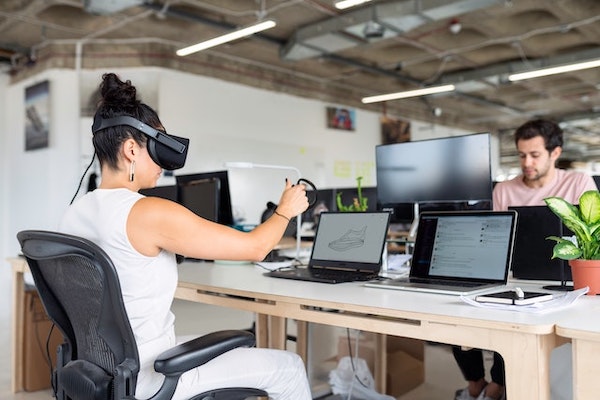DOSSIER Industry, laboratory of optical progress?

Faced with numerous challenges, the industrial sector often finds itself at the forefront of technical and technological progress. And this for many reasons. In recent years, optics has taken a big leap forward, and the industry as a whole is no stranger to it. Optical devices have completely changed the way workers work. Spiced up by augmented and/or mixed reality, the entire value chain of an industry is enhanced. But that's not all. The industrial sector, thanks to optics, is giving pride of place to new, more sustainable working methods.
Optics and industry, a way to respond to structural challenges
With globalization and the consequent liberal economy in the vast majority of the world, industry is one of the sectors that faces the greatest competition. It also faces structural challenges of considerable magnitude. Social, demographic and economic issues come together. The cost of labour, the aging of the population, the drain of skills, the requirements arising from increased competition such as the consumer's desire to be served more quickly, or even geopolitical events which are transforming the market employment are some of the issues that must be addressed.

In this complex context, technology often provides adequate answers. This is the case, for example, of augmented reality glasses. While the latter are far from having invaded the B to C market, many companies have already specialized in the design, production and sale of these systems dedicated to improving productivity and working conditions.
Augmented reality (AR) as well as mixed or mixed reality (MR) are technologies that offer the means to meet these challenges, not definitively, but by proposing products allowing rapid and efficient evolution of production processes.
Invaluable optical devices
Thanks to AR and a pair of connected glasses, a worker can collect information essential to his field of vision and therefore to his workstation. On the latter, physical, are superimposed in real time and in virtual mode instructions and information concerning the operation of the machines, the points to be checked, but also safety. These glasses are therefore an invaluable source of value for companies, with a very attractive return on investment.
Companies like Vuzix , PTC , Solomon 3D , AMA Xpert Eye …and many others are among those offering technology to make the most of AR to improve the productivity of industrial companies.
The various benefits of AR use of this technology are described as follows (from PTC.com):
- Remote assistance from an expert anytime, anywhere.
- 3D visualization of components/parts and processes, in situ, to more easily acquire and retain knowledge of the manufacturing chain.
- Real-time diagnosis and feedback based on key data from a manufacturing line at any time.
- Decreasing cycle times by capitalizing on more efficient employees through AR.
- Increased quality : AR contributes to the reduction of production scrap and machine stoppages by optimizing maintenance services. Operators improve their first-time fix rate.
- Disseminating knowledge from industry experts to newcomers through an effective and immersive experience.

So, can industry be the individual's guinea pig?
AR technologies are widely used to promote optical devices (including smart glasses) that have begun to invade the consumer market. However, even today, it remains difficult to see the same use (or even usefulness) for this application as for professionals. Time will certainly change this perception.
In the meantime, the ease with which a worker can carry out his work is a way forward for the development of even more efficient optical devices. Optics and industry therefore undoubtedly have a long way to go since, in other sectors as well, technological developments have been tested by professionals before being offered to individuals. This is particularly the case in sports or transport.
Industry and optics, as modern as they are responsible?
Also notable is the ability of the industrial sector to offer more responsible manufacturing processes. Often singled out, rightly, for some of the most significant greenhouse gas emissions, the industry has no choice but to rethink its model, at the risk of no longer being able to ensure its model. Even more than other sectors, it works with scarce resources and maintains tensions and sometimes tense diplomatic relations.
This existential challenge is taken into account by certain optical industrial companies which do not hesitate to modify their way of working to try to respond to them . This is the case, for example, of the French company Bollé Safety , which creates protective eyewear for professionals, whether industrial, or working in the health or defense sector.
[ =]
The company has announced that it wants to transform its products into eco-friendly versions. Thus, the raw materials and packaging used, the means of production aim to drastically reduce the carbon footprint of the company (we are talking about -35%).
If this new way of producing is not linked to industrial companies alone, they tend to respect a model that is asserting itself, and continue to consecrate industry as the laboratory of optical progress.


